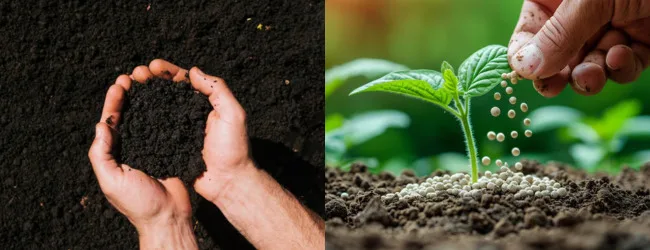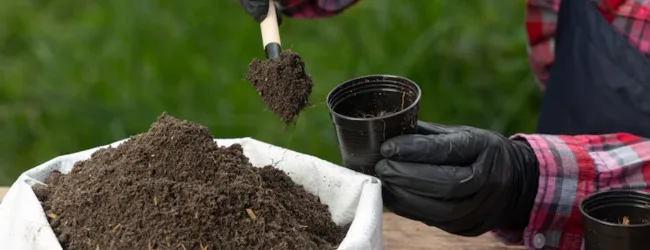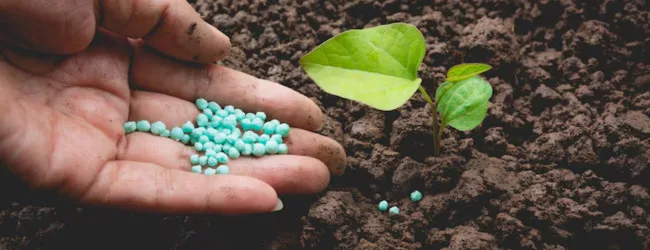Table of contents
- Why Are Manure and Fertilisers Used in Fields?
- Main Reasons for Using Manure and Fertilisers
- Difference Between Manure and Fertilisers (Table)
- Where Is This practised at a Large Scale in India?
- Indian Agriculture: Fertiliser Usage Statistics
- Manure & Fertiliser Types Used in Indian Farming
- Business Impact of Using Manure & Fertilisers
- Pros and Cons of Using Manure and Fertilisers
- Best Practices for Using Manure and Fertilisers
- When and How to Apply?
- Conclusion
- Frequently Asked Questions (FAQs)
India’s agricultural success largely depends on one critical aspect — soil health. That’s why manure and fertilisers are used in fields: to provide essential nutrients that help crops grow better, faster, and healthier. Without them, our soil becomes less fertile, which affects both yield and farmer income. This article breaks down exactly why they are important, how they’re used, and their impact, especially in the Indian context.
Why Are Manure and Fertilisers Used in Fields?

Let’s first understand the difference between manure and fertilisers and then dive into why they’re used.
🌾 Quick Definition:
- Manure: Organic matter from animal waste, compost, or plant residue.
- Fertilisers: Chemical or natural substances rich in nutrients like nitrogen, phosphorus, and potassium.
Main Reasons for Using Manure and Fertilisers
1. To Replenish Soil Nutrients
Over time, crops absorb nutrients from the soil. If not replenished, the soil becomes unproductive.
- Fertilisers instantly provide NPK nutrients (Nitrogen, Phosphorus, Potassium).
- Manure adds organic matter, improving soil texture and fertility.
2. To Improve Crop Yield
- Using fertilisers can increase productivity by 30–50%.
- Helps farmers harvest more per acre, especially in high-demand crops like wheat, paddy, sugarcane, and cotton.
3. To Enhance Soil Structure
- Manure increases water retention and aeration.
- Prevents soil erosion and compaction.
4. To Speed Up Plant Growth
- Fertilisers release nutrients quickly.
- Helps in the faster growth of vegetables, cereals, and fruits.
5. To Make Farming Economically Viable
- More yield = more profit.
- In India, fertiliser use has boosted farm incomes by up to 45% (Source: NABARD reports).
Difference Between Manure and Fertilisers (Table)
| Feature | Manure | Fertilizer |
|---|---|---|
| Source | Natural (animal, compost, etc.) | Chemical or synthetic |
| Nutrient Content | Low | High |
| Speed of Action | Slow release | Fast acting |
| Soil Improvement | Improves structure & microbes | Does not improve soil texture |
| Cost | Low cost or free | Moderate to high cost |
| Environmental Impact | Eco-friendly | Can cause pollution if overused |
💡 Pro Tip: If you want to start a Business but have too many doubts, connect with a Business expert from Boss Wallah for guidance – Check Out
Where Is This practised at a Large Scale in India?
States with High Use of Fertilisers:
- Punjab, Haryana, Uttar Pradesh: Known for intensive wheat and rice farming.
- Andhra Pradesh, Tamil Nadu: High fertiliser use in paddy and horticulture.
States with High Use of Organic Manure:
- Kerala, Sikkim, Uttarakhand: Promote natural and organic farming practices.
- Sikkim: First 100% organic state in India.
Indian Agriculture: Fertiliser Usage Statistics
- India is the second-largest consumer of fertilisers globally.
- Over 65% of Indian farmers use a mix of organic and chemical fertilisers.
- Per hectare, fertiliser consumption is ~135.8 kg/ha (2023).
- Government subsidies on fertilisers exceeded ₹2 lakh crore in FY 2023-24.
ALSO READ | Crop Production and Management: Techniques for Maximising Yields & Profits
Manure & Fertiliser Types Used in Indian Farming
👨🌾 Common Manure Types:

- Farmyard Manure (FYM) – Cow dung, urine, straw.
- Vermicompost – Earthworm-based composting.
- Green Manure – Plants like dhaincha are ploughed into the soil.
⚗️ Common Fertilisers:

- Urea (46% nitrogen)
- DAP (Diammonium Phosphate)
- MOP (Muriate of Potash)
Business Impact of Using Manure & Fertilisers
Real Example:
- Maharashtra’s grape farmers have tripled their income by using a combo of vermicompost and DAP fertilisers, ensuring sweet and export-grade produce.
Other Income Streams for Farmers:
- By-product sale: Cow dung can be sold for ₹3–5/kg.
- Organic manure units: Farmers in Bihar earn ₹30,000+/month from compost production.
ALSO READ | 10 High-Demand Agroculture Jobs in India (2025)
Pros and Cons of Using Manure and Fertilisers
✔️ Advantages
- Boosts yield quickly
- Improves soil over time (manure)
- Supports multiple crop cycles annually
❌ Disadvantages
- Chemical fertilisers can damage the soil if overused
- Overuse may pollute water bodies
- Organic manure takes time to decompose
Best Practices for Using Manure and Fertilisers
- Soil testing: Check what nutrients are actually needed.
- Balanced use: Avoid over-fertilising; combine both manure and fertilisers.
- Proper storage: Keep manure composted; avoid runoff of chemical fertilisers.
When and How to Apply?
| Crop Type | Ideal Manure Use Time | Ideal Fertiliser Application |
|---|---|---|
| Paddy | 15 days before transplant | At sowing and top dressing |
| Wheat | During field preparation | Split doses during growth stages |
| Vegetables | 2–3 weeks before planting | Weekly/bi-weekly in small doses |
Need Expert Guidance?
Starting a business can be challenging, but you don’t have to do it alone! At Boss Wallah, our 2,000+ business experts are ready to provide valuable insights and guidance. Whether you need help with marketing, finance, sourcing, or any other area of your business, our business experts are here to help you succeed
Confused about Which Business to Start?
Want to start your own business but unsure which one to choose? Explore Boss Wallah, where you’ll find 500+ courses by successful business owners, featuring practical, step-by-step guides on starting and growing various businesses.
Find your perfect business idea today
Conclusion
Manure and fertilisers are the backbone of modern agriculture in India. While manure nurtures the soil in the long term, fertilisers ensure fast and abundant crop growth. When used wisely, they increase crop productivity, improve farmer income, and support food security in India. For every farmer, small or large, understanding this balance is key to sustainable and profitable farming.
Frequently Asked Questions (FAQs)
1. Why are manure and fertilisers important in farming?
They provide essential nutrients that boost crop yield and improve soil health.
2. What’s the difference between manure and fertilisers?
Manure is natural and slow-acting, while fertilisers are synthetic and fast-acting.
3. Are there any side effects of fertilisers?
Yes, excessive use can harm soil and pollute water sources.
4. Can we use both manure and fertilisers together?
Yes, integrated use gives the best results.
5. Which crops need high fertiliser use?
Rice, wheat, sugarcane, and cotton.
6. Which Indian states use more manure?
Sikkim, Kerala, Uttarakhand.
7. Which fertilisers are most used in India?
Urea, DAP, and MOP.
8. Is organic farming possible without fertilisers?
Yes, using compost, green manure, and bio-fertilisers.
9. Is manure cheaper than fertiliser?
Yes, manure is often free or low-cost.
10. How can a farmer start using organic manure?
By composting cow dung, kitchen waste, or growing green manure crops.



